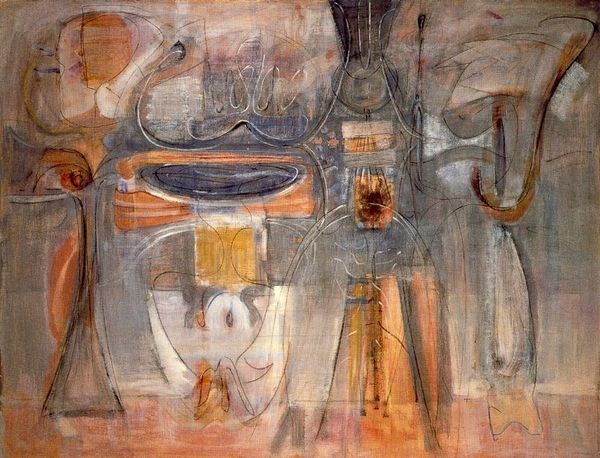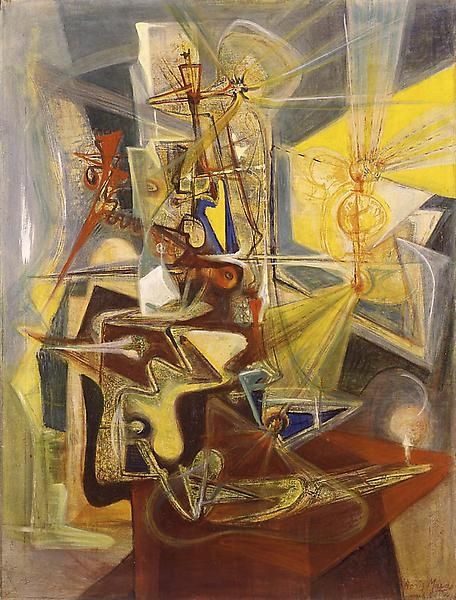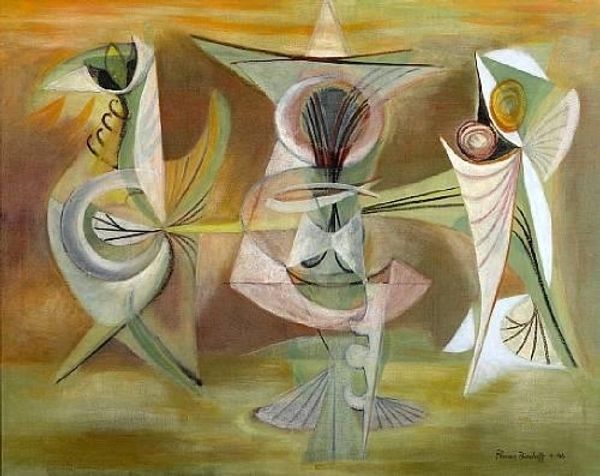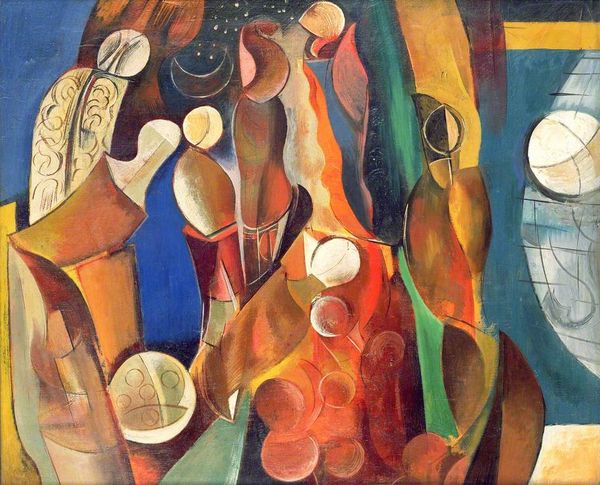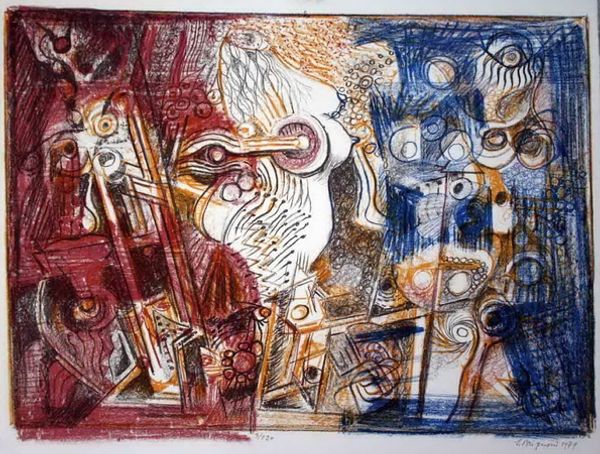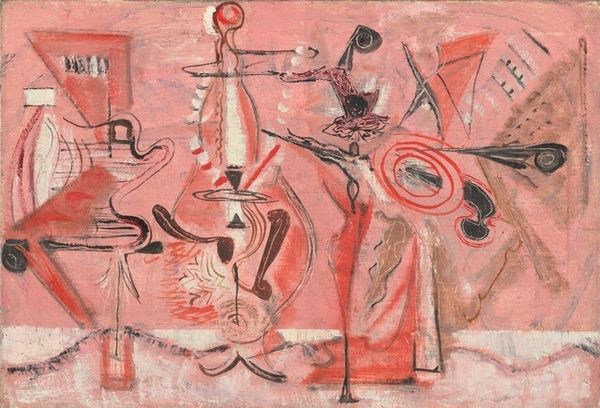
painting, oil-paint
#
abstract-expressionism
#
abstract expressionism
#
abstract painting
#
painting
#
oil-paint
#
oil painting
#
geometric-abstraction
#
abstraction
Copyright: Boris Margo,Fair Use
Curator: Here we have Boris Margo's "Thermal Forces," painted in 1947. Margo's canvas explodes with a unique blend of geometric abstraction and abstract expressionism using oil paint. What strikes you first about this composition? Editor: It feels like peering into a furnace, all fiery hues and fractured shapes. The longer I look, the less certain I am about what’s in focus; a beautiful kind of visual sizzling. Curator: Margo’s construction embraces the tenets of geometric abstraction with structural forms existing beside areas of free-flowing color. One notices that the color scheme radiates outward with warm, orange and yellow tints set against cool blue undertones to generate contrast. How does that relationship shape our experience? Editor: The temperature analogy feels right on. Those warm colors have an aggressively joyful feeling to me, maybe even overwhelming without the visual quiet that those cooler sections offer. They’re like an oasis offering respite to the viewer’s eyes. I am drawn to the overall sense of movement, a kinetic, crackling energy running across the painting’s surface. Curator: Precisely. Margo juxtaposes line with form and shape, almost evoking the sensation of peering into the unknown with his bold arrangement of symbolic vocabulary and abstract articulation. Its significance lies in how the painting pushes beyond conventional forms, emphasizing abstraction as a language capable of communicating energy and forces. Editor: He certainly makes you feel that—the "thermal forces," you called it? Makes you consider those normally invisible forces acting on… well, everything. Do you get a sense of a hidden order amidst the chaos, though? The structural aspects sort of hint at this. Curator: A perceptive reading. While seemingly disordered, the network of lines suggest an underlying order. Those geometries hint toward a calculated construction rather than pure accident. Editor: Right. I can almost sense the hidden architecture or engineering diagram holding the picture together behind the image plane. Thinking of it structurally helps me feel calmer considering a piece named "Thermal Forces" feels ready to fly apart. Curator: Thank you for helping contextualize Margo’s visual statement! It's an incredible testament to abstract expressionism's vitality during this post-war moment, showcasing not only movement, but also his capability for artistic invention. Editor: Indeed, I love leaving with new respect for works of art that initially appeared incomprehensible—it’s pieces like "Thermal Forces" which test our ability to perceive underlying meaning that is both personally gratifying, and culturally necessary.
Comments
No comments
Be the first to comment and join the conversation on the ultimate creative platform.
